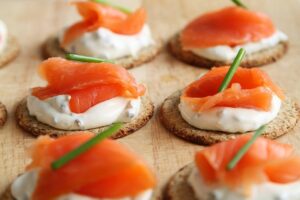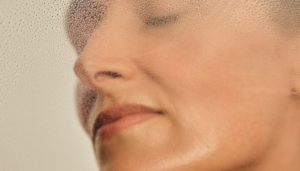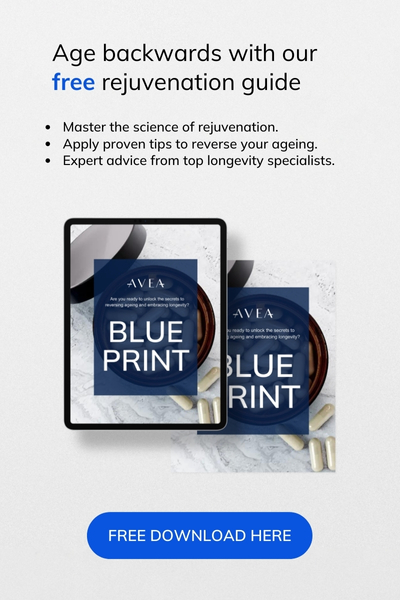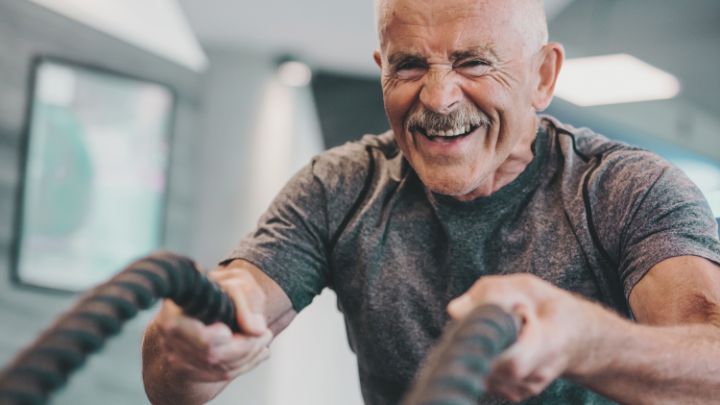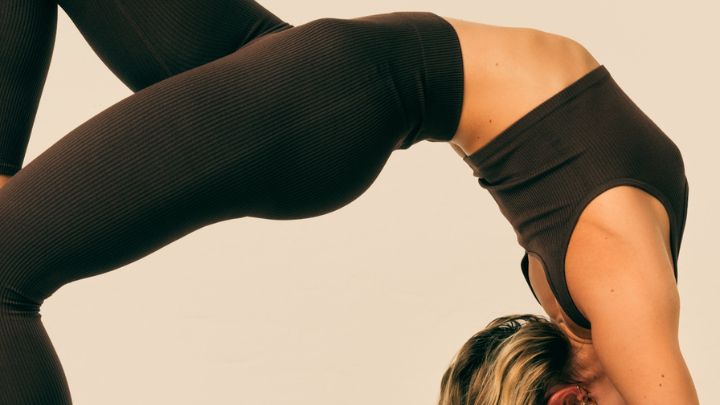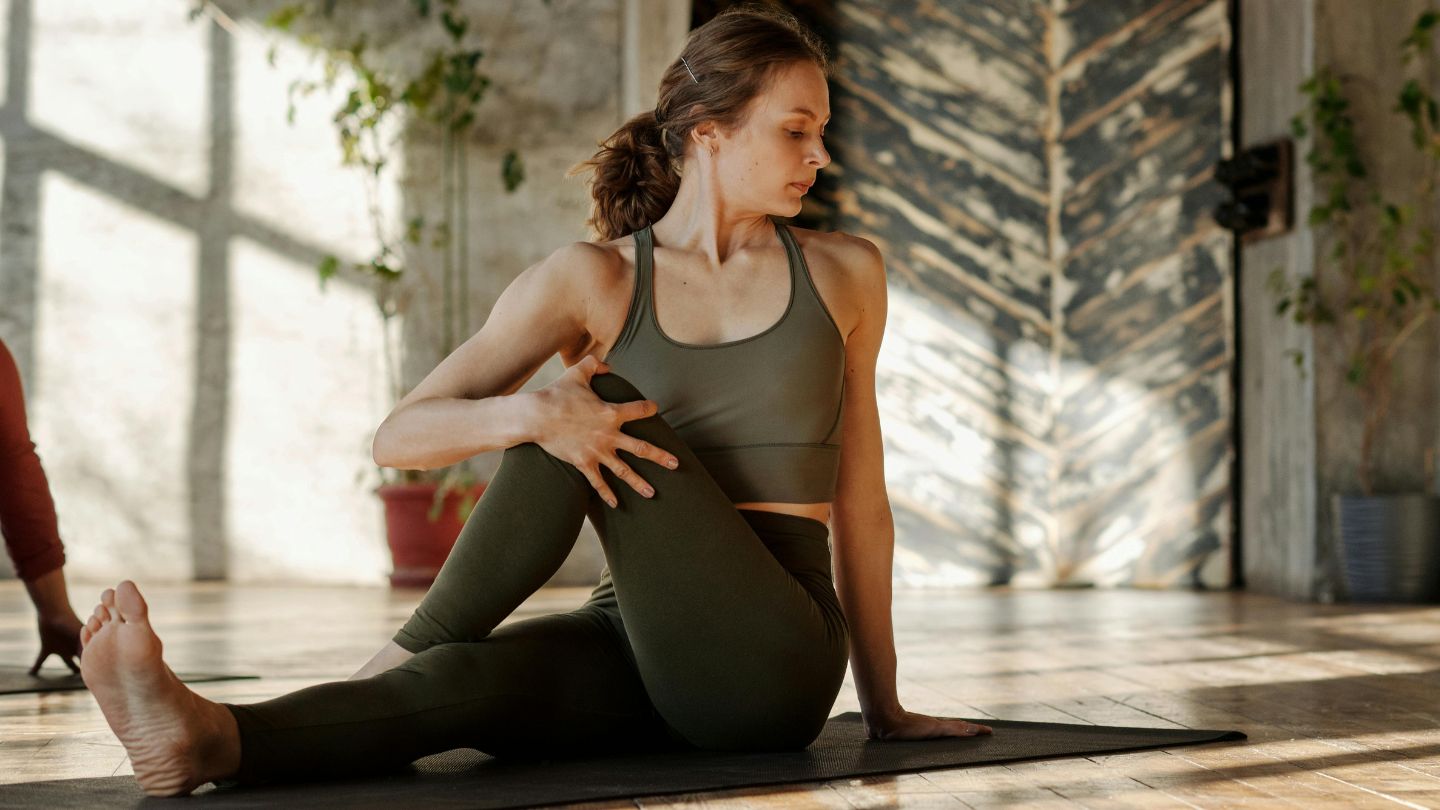In an era dominated by sedentary habits, the stakes for our health couldn’t be higher. Being a couch potato, whether we like it or not, impacts more than just our physical fitness.
The toll of inactivity extends from heart disease, obesity, or diabetes to mental well-being. Overthinking about whether exercise will truly benefit you? The evidence is undeniable. As you grow older, you start seeing it for yourself.
Physical decline sets in from our mid-20s, marked by a gradual decrease in heart efficiency and muscle strength, turning simple tasks into challenges as we age.

But here’s the twist: regular exercise doesn’t just slow down ageing; it redefines it, keeping us biologically younger.
We know exercise is essential, but the real question is: what kind? The only correct answer would be: exercises that work best for you. But if you haven’t found your perfect routine yet, why not take advice from the experts themselves?
This Avea article uncovers the best exercises for longevity, straight from the routines of top longevity experts. Discover their secrets to reversing their ageing process and what they’re doing to be able to lead a longer, more vibrant life.
In this article
Free guide to reverse your biological age
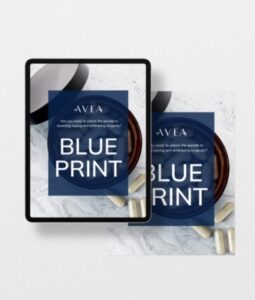
- Master the science of rejuvenation.
- Apply proven tips to turn back the clock.
- Transform your health with top longevity specialists.

Recent research underlines the importance of holistic lifestyle choices, including exercise, for extending life expectancy. The study from the University of Jyväskylä, involving over 11,000 adult twins, found that physical activity substantially lowers mortality risk, highlighting exercise’s key role in increasing lifespan. This comprehensive review showcases how a blend of regular physical activity and other healthy habits can notably extend life expectancy.
Dr. David Sinclair

While his passport age says 54– Dr. David Sinclair, longevity expert says that his real age is more than a decade younger. He’s a biologist and academic, best known for his research on ageing and epigenetics.
Though he does not really like exercise, he knows the importance of moving his body. Whenever he’s not busy, he’s trying to move and keep his hips in great shape.
Example of a simple hip hinge exercise:
- Stand tall, core engaged.
- Hinge forward, arms relaxed.
- Squeeze glutes to stand again.
- Place feet, shoulder width apart.
- You need to have a neutral spine, only your hips should move.

How quickly and easily can you get up the floor with your crossed legs is also an indicator of how you’re going to age. Use both knees and no hands whilst you get up. How are you doing?
”You need to strengthen your muscles– yoga can be as valuable as lifting weights. So, there’s not much of an exercise better than the other. But the point is, for at least 10 minutes, lose your breath. You need to put your body in a state where you can’t carry a conversation”, he says.
Our evolutionary ancestors needed to move to survive. Just because we now have a roof over our heads, clothes to wear, and food which can be deposited in front of our doorstep, doesn’t mean we don’t mean to move. It means, it has never been this important to take time to move.
According to Dr. David Sinclair, just like fasting, exercise is a great means to turn on our longevity genes. Being out of breath every day or every other day has been linked to a reduction in multiple diseases.
The worst thing you can do for ageing is to never get out of breath.
Dr. David Sinclair
Exercising helps promote autophagy, your own cellular cleaning crew, allowing you to have a healthy and functional internal environment. Exercising is also a form a hormesis– adding a type of stress that is beneficial to your body.
Learn how to promote autophagy.
His approach is straightforward: engage in daily physical activity. He targets at least 30 minutes of moderate exercise every day and includes vigorous cardio workouts a few times per week.
To counter muscle loss, a natural part of ageing, he regularly practices weightlifting, focusing on compound movements like deadlifts, leg extensions, and leg curls, specifically targeting large muscle groups.
When he can’t make it to the gym, he simply stands more often or move every here and then. He opts for a standing desk to mitigate the risks associated with prolonged sitting, which can increase all-cause mortality and negatively impact blood sugar, cholesterol, and body fat levels.
Discover the anti-ageing supplements Dr. David Sinclair takes daily.
Dr. Peter Attia

Smart people are not aiming to live longer just for the sake of living longer. They aim to optimise their health, so they can live to the fullest. This includes new adventures, new learnings, new failures, and new growths.
The Centenarian Decathlon is a mental model concerned with your physical capabilities.
Dr. Peter Attia created it as a means to visualise the most important physical tasks you should be able to do until your very last day.
Consider the movements or activities you want to maintain until the end of your life. Once identified, tailor your current exercise routine to ensure you can still perform these activities in your later years.
Remember, as we age, we naturally lose strength and aerobic capacity. So whatever you want to be doing at 80, you need to be doing more now.
To prepare for your future self’s abilities, intensify your current regimen. For instance, if your goal at 80 is to carry heavy grocery bags up the stairs, work on lifting heavier weights now to build the necessary strength.
Your list should be personal and reflect what you value the most. In the end, it should aim for (i) delaying the onset of diseases, (ii) preserving the highest possible quality of life.
Attia’s example list includes:
- Hike 1.5 miles on a hilly trail.
- Get up off the floor under your own power, using a maximum of one arm for support.
- Pick up a young child from the floor.
- Carry 2 5-pound bags of groceries for 5 blocks.
- Lift a 20-pound suitcase into the overhead compartment of a plane.
- Balance on 1 leg for 30 seconds, eyes open. (Bonus points: eyes closed, 15 seconds.)
- Have sex.
- Climb 4 flights of stairs in 3 minutes.
- Open a jar.
- Do 30 consecutive jump-rope skips.
Your list might differ, but the end goal is to find ways to remain physically strong, even for the simplest of activities like opening a jar. And to become strong, Dr. Attia argues that it is important to build stability.
Attia emphasises the importance of correct movement patterns to reduce injury risk. He advocates for dynamic neuromuscular stabilization (DNS), aimed at retraining the body and brain to revert to ideal movement patterns learned in childhood. He recommends the following exercises:
- Toe yoga: This exercise enhances toe flexibility and control. Begin by sitting or standing and focus on moving your toes independently. Try lifting just your big toe while keeping others flat, and then lift all toes except the big one.
- Cat-cow: A yoga pose that improves spinal mobility. Start on your hands and knees. For the ‘cat’ position, round your back, tucking your chin to your chest. Then, transition to the ‘cow’ by arching your back and lifting your head.
- Scapular CARs (Controlled Articular Rotations): This exercise involves slow, controlled movements of the shoulder blades. Start by standing or sitting, then rotate your shoulders in controlled, circular motions, focusing on moving your shoulder blades.
- Farmer’s carries: This exercise strengthens grip and builds overall body strength. Hold a weight in each hand at your sides and walk a set distance or for a set time.
- Weighted step-ups: Hold weights in your hands or place them on your shoulders. Step up onto a raised platform or step, then step back down, alternating legs.
Dr. Attia enjoys heavy strength training, sharing methods like eccentric, blood flow restriction training, and lifting with resistance bands on Instagram. But unlike your other gym bros, Dr. Attia values practical strength–the ability to carry heavy items over muscle size or bench press records.
He is keen on rucking–basically walking or hiking with a backpack heavy enough to make your ancestors proud. Inspired by Michael Easter’s book “The Comfort Crisis,” incorporating it into his routine several days a week.
When not rucking, his workouts focus on improving grip strength, power generation, pulling motions, and hip-hinging movements, essential for overall fitness.
Dr. Attia also values zone 2 training as foundational, improving mitochondrial health, key in preventing chronic diseases. He recommends cardio activities like walking or cycling, paced to allow conversation but still challenging.
Aiming for 3 hours per week, split into four 45-minute sessions, is ideal. Equally crucial is zone 5 training for maintaining VO2 max, countering its age-related decline. Dr. Attia suggests 1 to 2 VO2 max sessions weekly, involving 4-minute intervals at peak sustainable pace, followed by 4 minutes of rest, repeated 4 to 6 times.
Discover Peter Attia’s 6 key pillars of longevity.
Dr. Andrew Huberman

Someone else we all trust is neuroscientist expert, Dr. Andrew Huberman. He’s known for sharing free, science-backed health optimisation tips through his famous podcast The Huberman Lab, or on his Instagram. He credits a happy and healthy life to the same fitness routine he’s used for 30 years.
Basically, he’s been lifting 3 days per week, running 3 days a week, but one of the runs is a long run, one is a medium, and one is a sprint-type of run. He likes being able to be mobile and move for how much he wants. The same applies for sprinting, he wants to be able to keep sprinting, so sometimes, he does.
Training differently changes your cognition. And according to Dr. Huberman, it’s probably related to your hormones. He thinks his cognition is better when he’s doing more cardio and when the repetition ranges are a little higher. Here’s his 7-day fitness routine:
Day 1: Sunday for endurance and mental resilience
Dr. Huberman engages in long endurance training on Sundays. This includes a 60-90 mins slow jogging or using some hills to hike if possible. He also uses a weight vest or backpack filled with heavy items, as suggested by Dr. Peter Attia.
Day 2: Mondays for strength
On Mondays, he trains his lower body, mostly his legs. After warming up, he does a 2-3 hard sets of exercises for each muscle group. This includes squats RDL GHR Leg curl Calf raises standing Calf raise seated.
Day 3: Tuesdays for recovery
On Tuesdays, he focuses on recovery and does not work out at all. Instead, he focuses on contrast therapy, including deliberate hot and cold exposure. He does a 20 minutes hot sauna, followed by 3-5 minutes in cold plunge, and repeats the session by alternating at least 3-5 times. He walks a lot on Tuesdays.
Day 4: Wednesdays for cardiovascular training and torso workout:
On Wednesdays, he engages in a cardio or torso workout. This includes either 25-30 minutes running after warming up or a workout that targets his chest, shoulders, neck, and back. Exercises include shoulder press, chin ups, etc.
Day 5: Thursdays for cardio or Torso:
On Thursdays, he repeats his cardio or torso session. This includes either running, rowing, jumping a rope, or cycling. It’s a brief cardio at 75-80% effort for about 35 minutes.
Day 6: Friday for High Intensity Interval Training (HIIT)
The goal on Fridays is to get his heart rate up the most, and tap into strength and hypertrophy training for his legs without any weights. For instance, he does intervals on bike for 20-30seconds all out sprint, then takes a 10 seconds rest. Then he repeats it 8-12 times. He only does such movements if he’s in his best form.
Day 7: Saturday for small muscle groups and overall vitality
Saturdays are mostly for biceps, triceps, tips, calves, and neck. The activities include triceps dip, chin up, dumbbell curls, incline curls, dip calves, triceps kickback, standing and seated neck. Here, the weights are lower than other days but include more sets (4-8 reps).
Dr. Huberman’s fitness toolkit involves alternating between heavy and lighter weights. Initially, perform 3-4 sets with 5-8 reps using heavy weights, resting 2-4 minutes between sets. The following month, switch to lighter weights for 8-15 reps in 2-3 sets, with shorter rest periods. Select two exercises per muscle group focusing on contraction and full range of motion. Employ physiologic sighs to lower heart rate between sets and practice slow breathing post-workout for relaxation and nervous system recovery. For instance, do a 3-5 minutes of deliberate breathing to shift your nervous system back to normal.
Dr. Mark Hyman

Functional medicine doctor, Dr. Mark Hyman is not a big fan of the gym. In fact, he started weight training in his 60s. He was firstly already satisfied with biking, tennis, and yoga– his personal favourites and hobbies.
However, after starting strength training, he has noticed overall improvement in his health, muscle mass, balance, agility, strength, and back pain. He suggests aerobic exercises to optimise your VO2 max, increasing strength and muscle mass function, as well as flexibility and agility. According to Dr. Hyman, these are the principal physical factors you should be focusing on.
All aerobic exercises do wonders,” he remarks. Yet, there’s a shortcut to reap these rewards more swiftly: HIIT workouts.
Hyman suggests jumping into a HIIT routine. Imagine sprinting for 45 to 60 seconds, then taking a leisurely 3-minute walk or jog. Repeating this several times for half an hour, thrice weekly, can work wonders. It ramps up your metabolism, aids in shedding pounds, and elevates your VO2 max.
In place of heavy free weights, Hyman leans towards gentler resistance bands. These bands, unlike barbells, don’t burden your spine, easing the strain on your joints. They offer constant feedback through a full motion range, enhancing stability and control in all your moves.
Hyman is also a devotee of Tom Brady’s TB12 home-training regime, using it for vigorous 30-minute resistance band exercises 3–4 times a week. “These bands are a great investment. There’s even an app for a thorough workout guide. I take them everywhere,” he shares. His go-to moves include squats, pushups, shoulder presses, chest presses, and planks.
Dr Hyman also advocates for yoga, especially for keeping older adults agile and free from discomfort. It might even prolong your health span. Research on seniors indicates that yoga boosts walking pace and eases getting up from a chair—markers of reduced frailty and heightened longevity.
“Just a quarter-hour of breathing and stretching can rejuvenate our nervous system,” Dr. Mark Hyman.
Unsure where to start? He advises scouring YouTube for free yoga tutorials or trying a 10-minute session of yoga nidra. This form of yogic rest is praised for diminishing inflammation and calming our innate “fight or flight” response.
Start your year right with Dr. Mark Hyman’s advice on nutrition.




